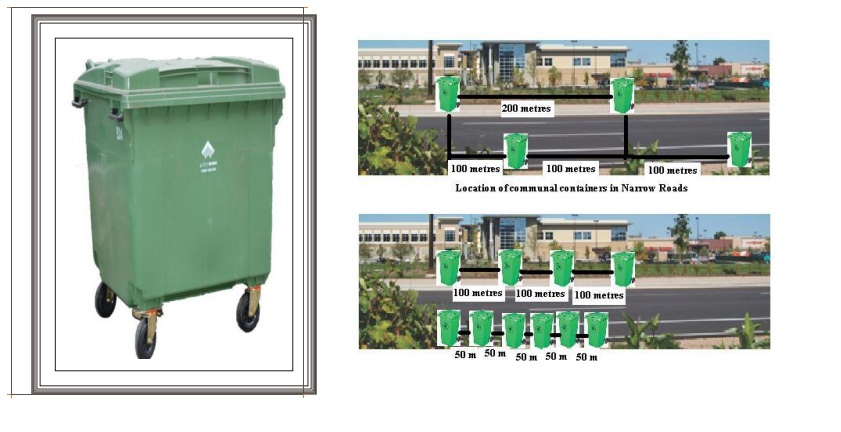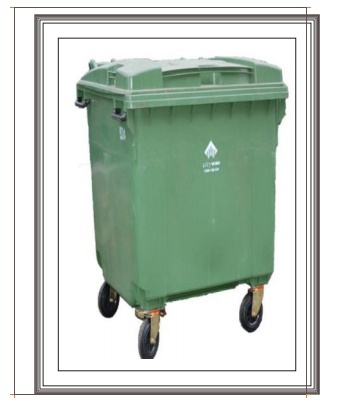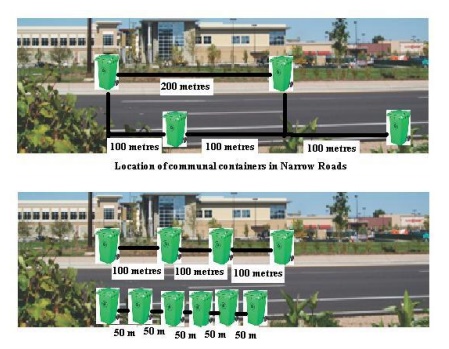Chapter: Civil : Municipal Solid Waste Management : Collection And Transfer
Solid Waste Management: Storage: Containers/Collection Vehicles

STORAGE: CONTAINERS/COLLECTION VEHICLES
Containers/storage bins
The design of an efficient waste collection system
requires careful consideration of the type, size and location of containers at
the point of generation for storage of wastes until they are collected. While
single-family households generally use small containers, residential units,
commercial units, institutio and industries require large containers. Smaller
containers are usually handled manually whereas the larger, heavier ones
require mechanical handling. The containers may fall under either of the
following two categories:
(i) Stationary
containers: These are used for contents to be transferred to collection
vehicles at the site of storage.
(ii) Hauled
containers: These are used for contents to be directly transferred to a processing plant, transfer station or disposal site for
emptying before being returned to
the storage site.
The desirable characteristics of a well-designed container are low cost,
size, weight, shape, resistance
to corrosion, water tightness, strength and durability (Phelps, et al.,
1995). For example, a container
for manual handling by one person should not weigh more than 20 kg,
lest it may lead to occupational health hazards such as muscular strain, etc.
Containers that weigh more than 20 kg, when full, require two or more crew
members to manually load and unload the wastes, and which result in low
collection efficiency.
Containers
should not have rough or sharp edges, and preferably have a handle and a
wheel to facilitate mobility. They
should be covered to prevent rainwater from entering (which increases the
weight and rate of decomposition of organic materials) into the solid wastes.
The container body must be strong
enough to resist
and discourage stray animals and scavengers from ripping
it as well
as withstand rough handling by
the collection crew and
mechanical loading equipment. Containers should be provided
with a lifting bar, compatible
with the hoisting mechanism of
the vehicle. The material used should be light,
recyclable, easily moulded and the surface must be smooth and resistant to
corrosion. On the one hand, steel
and ferrous containers
are heavy and subject to
corrosion; the rust peels
off exposing sharp
edges, which could
be hazardous to the collection crew.
Communal containers
TYPICAL COMMUNAL CONTAINER

The use of communal containers is largely
dependent on local culture, tradition and attitudes towards waste. Communal
containers may be fixed on the ground (stationary) or movable (hauled). Movable
containers are provided with hoists and tails compatible with lifting mechanism
of collection vehicles and such containers have capacities of 1 - 4 m3.
The waste management authority must monitor, maintain and upgrade the communal
containers. Note that in residential and
commercial areas in India,
the communal containers
are often made of concrete.
In areas
with very high
waste generation rates,
i.e., rates exceeding two truckloads daily, such as
wet markets, large
commercial centres and large business establishments, roll-on-roll
or hoisted communal containers with capacities of 12 - 20 m3
and a strong superstructure with
wheels are used.
Normally,
the collection vehicle keeps an
empty container as a replacement before it hauls the filled container. When a
truck is used as a collection vehicle, the use of communal containers may be
appropriate.

This means that the farthest
distance the householder will have to walk is 50 meters. However, in narrow
streets with low traffic, where the house owner can readily cross the street, a
longer distance is advisable. If the collection vehic le has to stop frequently,
say, at every 50 m or so, fuel consumption increases, and this must be avoided.
Disadvantag es
The major disadvantage of
communal containers is the potential lack of maintenance and upgrading. The
residuals and scattered solid wastes emit foul odours, which discourage
residents from using the containers properly.
In addition, if fixed containers
are built below the vehicle level, the collection crew may be held responsible for sweeping and
loading the solid wastes into
transfer containers before
being loaded into
the collection vehicle. Sweeping and cleaning the communal
containers of residuals obviously impinge on the time of the crew members and
take a longer time than if the wastes are placed in smaller containers. As
fixed communal containers have higher rates of failure, their use is not
advisable.
To overcome the problem of maintaining communal containers,individual
residents should maintain their own containers and locate
them in designated areas. The
communal area must have water and drains to facilitate the cleaning of the
containers. This practice has the
advantage of reducing the number of collection
stops and at the same time maintaining the householder's responsibility for cleaning
them. The residents must also be properly educated on the importance of good
housekeeping as the containers in the
communal area are subject to vandalism. In the
main, if communal containers are to be successful, the design of the
containers, loading and unloading areas, and collection vehicle accessories
should be co-ordinated.
Related Topics